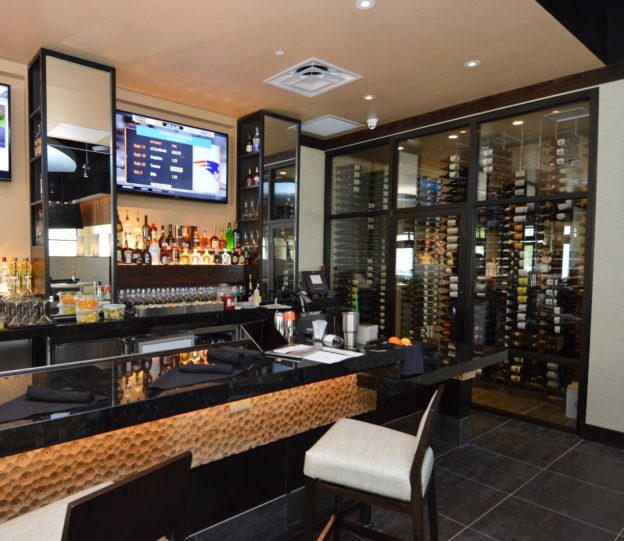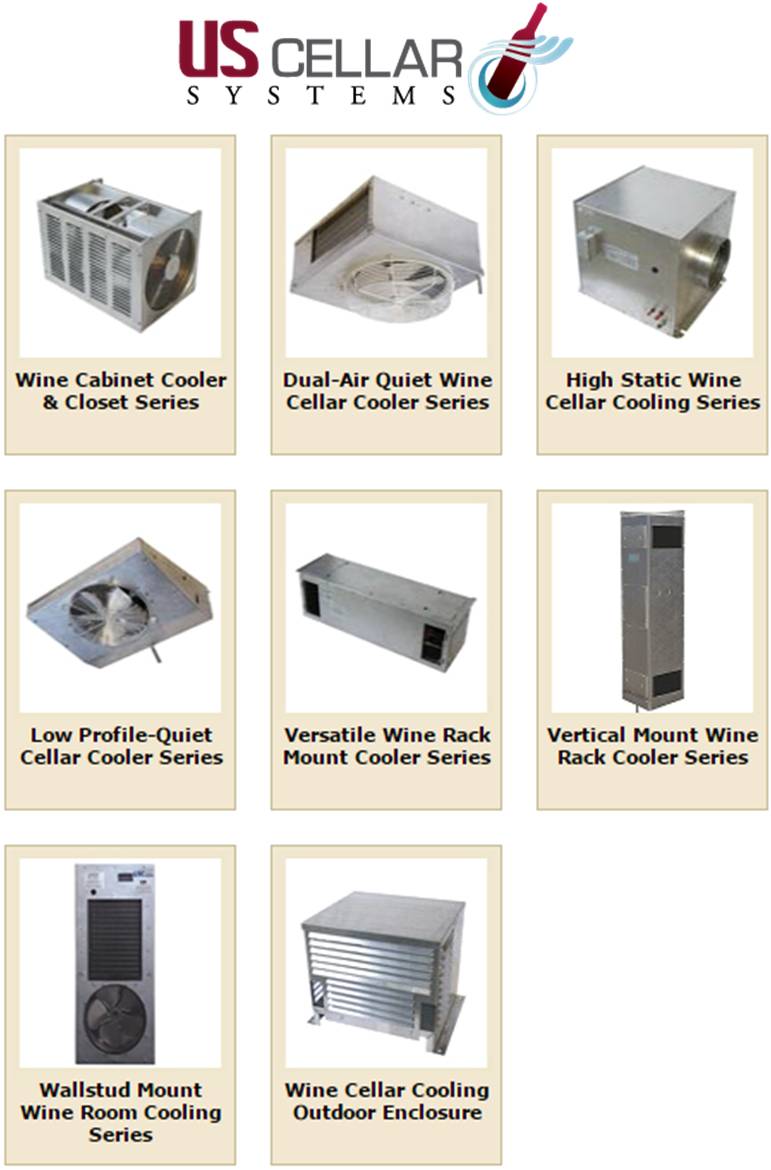Check out this modern commercial wine cellar designed and installed by Wine Cellar Specialists in a restaurant in Richardson, Texas, a suburb of Dallas. To store their client’s collection in optimum conditions they used our HS Series wine cooling unit. For many years, we have been providing a broad range of climate-control systems that cater to the unique requirements of each customer.
Building a Safe Restaurant Wine Cellar that Can Prevent a Waste of Investment and Help Boost Sales
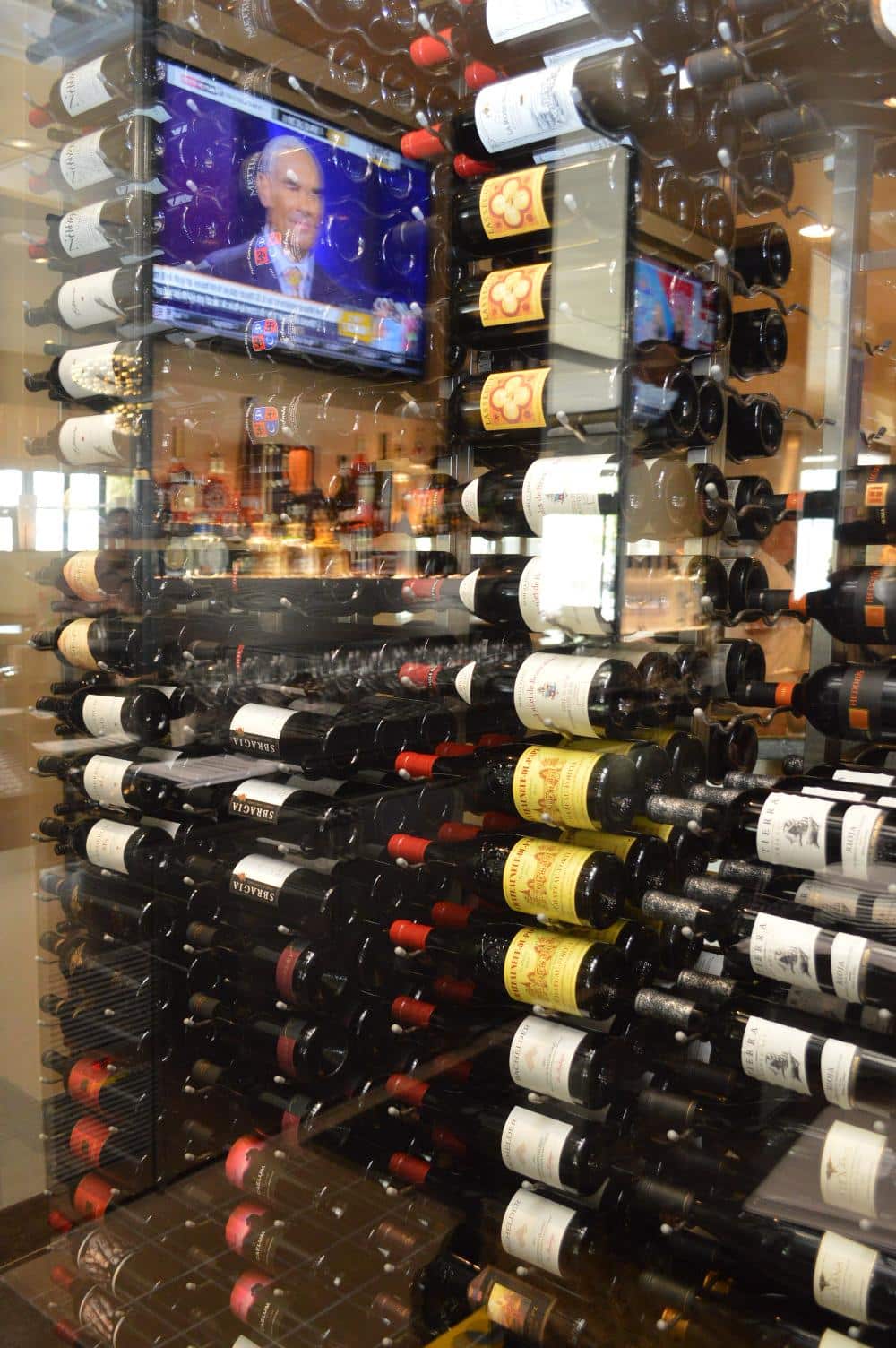
Dual Pane Glass Window Showing the Commercial Wine Racks. CLICK TO ENLARGE
If you are selling wines, you have to think about how to preserve their quality. Wine easily deteriorates when stored in poor conditions. Regular air conditioners cannot stabilize a room as wine cooling units do.
The main reason wine cellars are in demand in restaurants and other commercial establishments all over the world is that the owners want to avoid a waste of investment.
Additionally, selling quality wine products can benefit your business. As the saying goes, “First impressions last.”
If you sell wine that has gone bad, do you think your customers will go back to purchase another wine? You can jeopardize the good reputation you have created for your business.
Failure to provide your wines with a climate-controlled room will not help increase your profit.
The Importance of Hiring a Wine Storage Expert
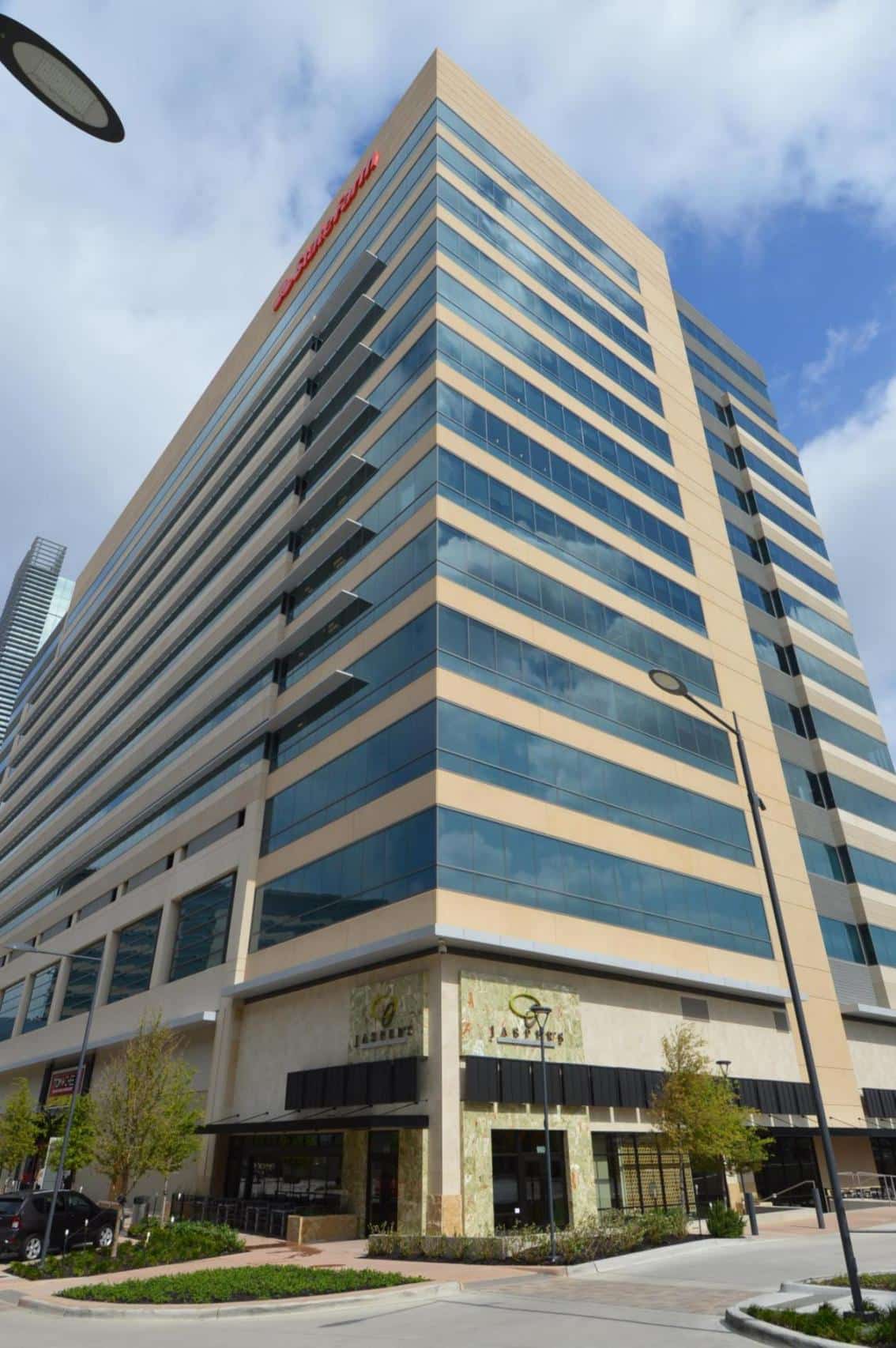
Jasper’s Restaurant Richardson, Texas CLICK TO ENLARGE

Outside the wine cellar in the bar area of Jasper’s Restaurant in Dallas. CLICK TO ENLARGE.
It is best to work with a company that has extensive knowledge in proper wine storage to ensure that all of your requirements are met. Wine Cellar Specialists is one of our partners in building refrigerated wine storage facilities. We provide them with efficient cooling solutions that will prevent external factors from damaging the wine.
Recently, the owner of Jasper’s Restaurant at CityLine a development in Dallas, Texas, sought the help of Wine Cellar Specialists, to build a fully functional wine cellar beside the bar area.
Efficient and Quiet Wine Cooling Solution for Stabilizing Temperatures and Humidity Levels
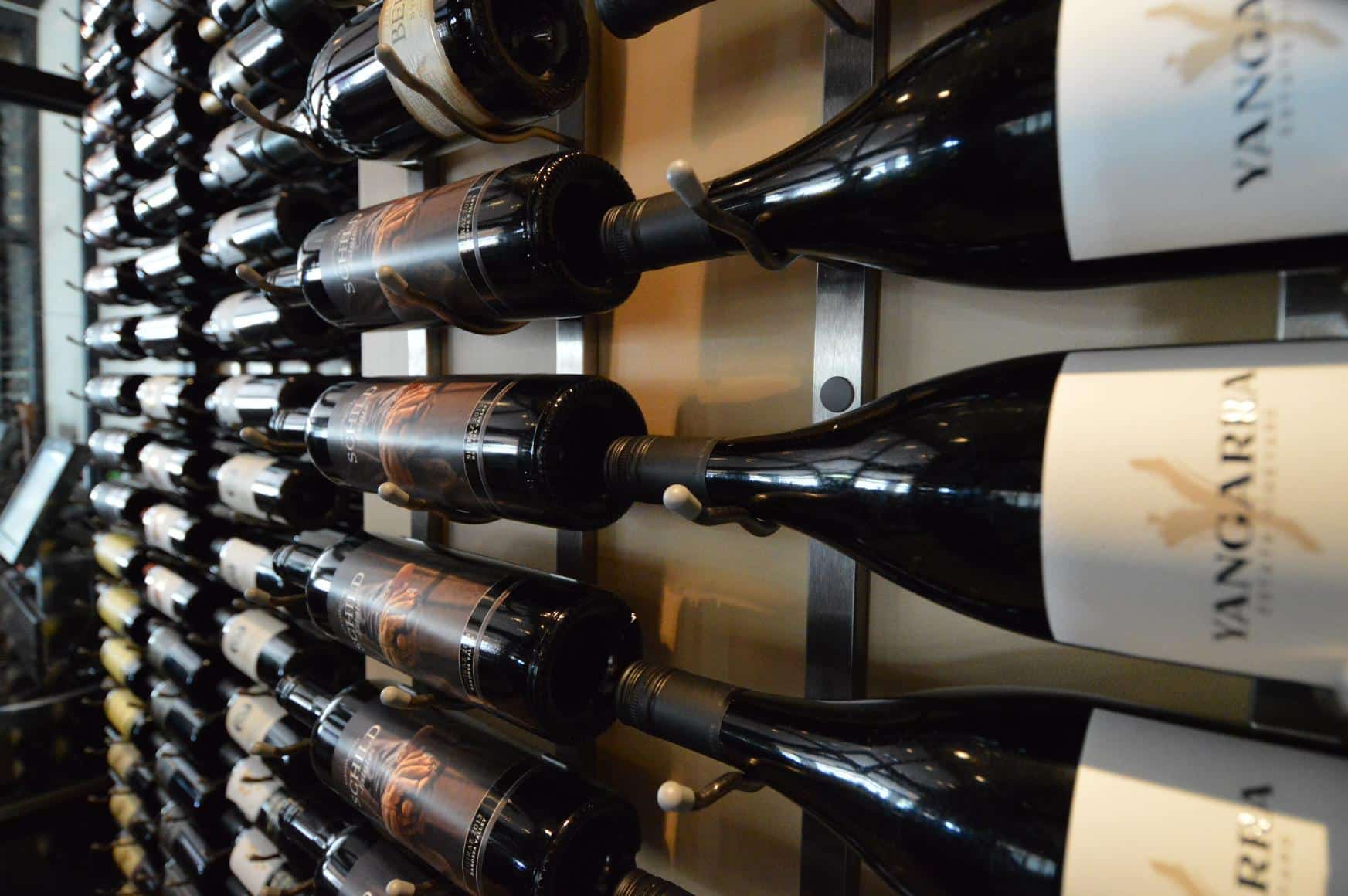
A climate-controlled commercial wine cellar will preserve the quality of wine for many years and can increase wine sales. CLICK TO ENLARGE.
Wine Cellar Specialists made a careful assessment of the client’s storage needs. This initial examination helped them select the type of cooling unit suitable for the size and location of the room and the number of bottles to be displayed in the cellar.
Determining where the cooling unit will be installed is of the utmost importance for the builder to run the correct electrical and drain lines before the construction begins.
How a Reliable Climate Control System Can Safeguard Wine in Dallas
If the builder installed the wrong choice of cooling in your cellar, you could not expect the wine to preserve its desirable taste and aroma. It must be of the correct size and capacity to ensure superior performance and efficiency.
At US Cellar Systems, we offer different models of commercial-grade wine cooling systems to cater to the unique requirements of our clients.
They are manufactured to maintain the optimum storage temperatures (55-65 degrees Fahrenheit) and humidity levels (60-70 percent) in wine cellars.
All of our cooling products are factory-wired for simple installation, pressure tested, and ETL certified.
Cooling Unit Installation for a Small Commercial Wine Cellar in Texas – Features and Benefits
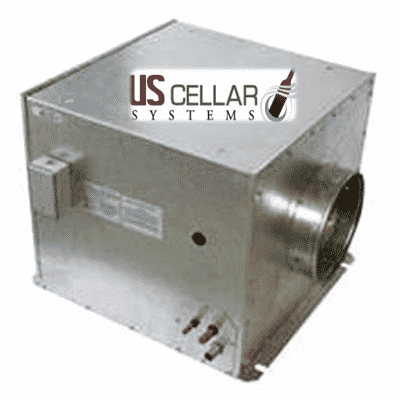
SEE THIS HS Series Wine Cooling Unit Texas Commercial Cellar Project
Wine Cellar Specialists used our High Static (HS Series) 10000 model on this project. Since it is a ducted split wine cooling system, they needed to connect the unit to ductwork.
They created a supply vent in the ceiling where the cool air can flow into the wine room and a return vent where the warm air can be carried out.
The evaporator of the HS Series wine refrigeration unit was placed above the ceiling where it is easy to access for maintenance. This equipment does not occupy floor space, making it an ideal choice for areas where space is scarce.
Another advantage of using a split cooling system in your commercial wine cellar in Texas is reduced noise or no noise at all. This is because the compressor can be installed in another room or outdoors. On this project, the compressor sits on the upper level of the restaurant, in a room where the rest of the establishment’s compressors are.
Modern Wine Rack Design to Attract Potential Customers
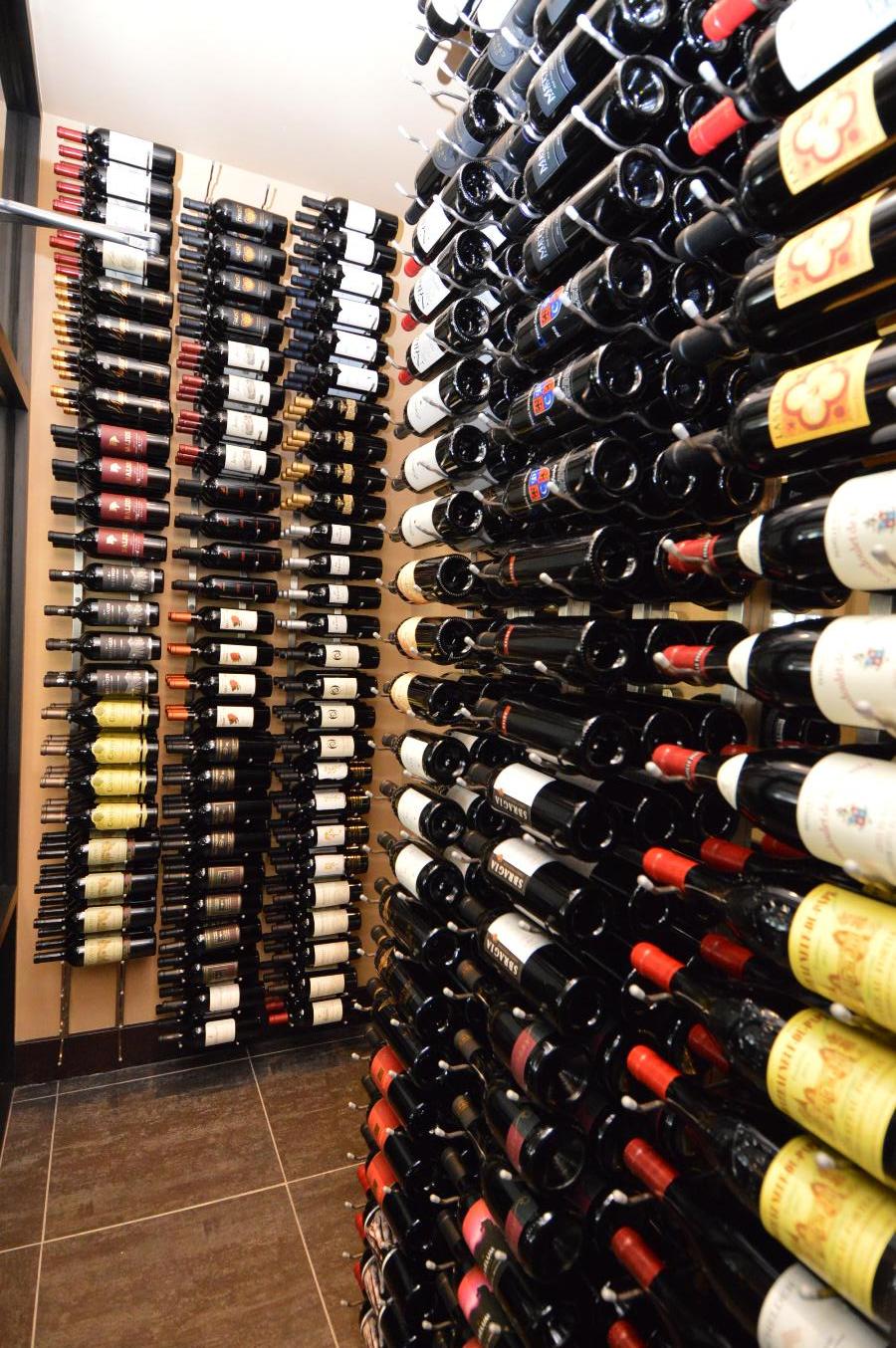
Like this wine room? CHECK OUT another Contemporary Wine Cellar Equipped with a Commercial Grade Cooling System
It’s not only the proper preservation of wine that you must consider when building a wine cellar. In addition to quality, how you present your products can also affect the sales revenue of your business.
An attractive wine display will encourage consumers to try your products. It will make your restaurant stand out from the rest.
Metal is a sought-after material in manufacturing commercial wine racks for high-end restaurants. Metal wine racks are sleek and stylish. They are also durable, versatile, and easy to maintain.
Striking High-Density Wine Display with VintageView Metal Wine Racks
The interior of Jasper’s Restaurant has a contemporary design. To complement this, Wine Cellar Specialists utilized the metal wine racks from VintageView.
For many years, VintageView has been providing racking solutions to restaurant owners who want to display their wines in a modern way.
The metal wine racks display the bottles in a label forward orientation, which makes it convenient for customers to choose a particular wine to be served with their meal. It also makes inventory and organization more manageable.
Floor-to-Ceiling and Wall Mounted Wine Racks
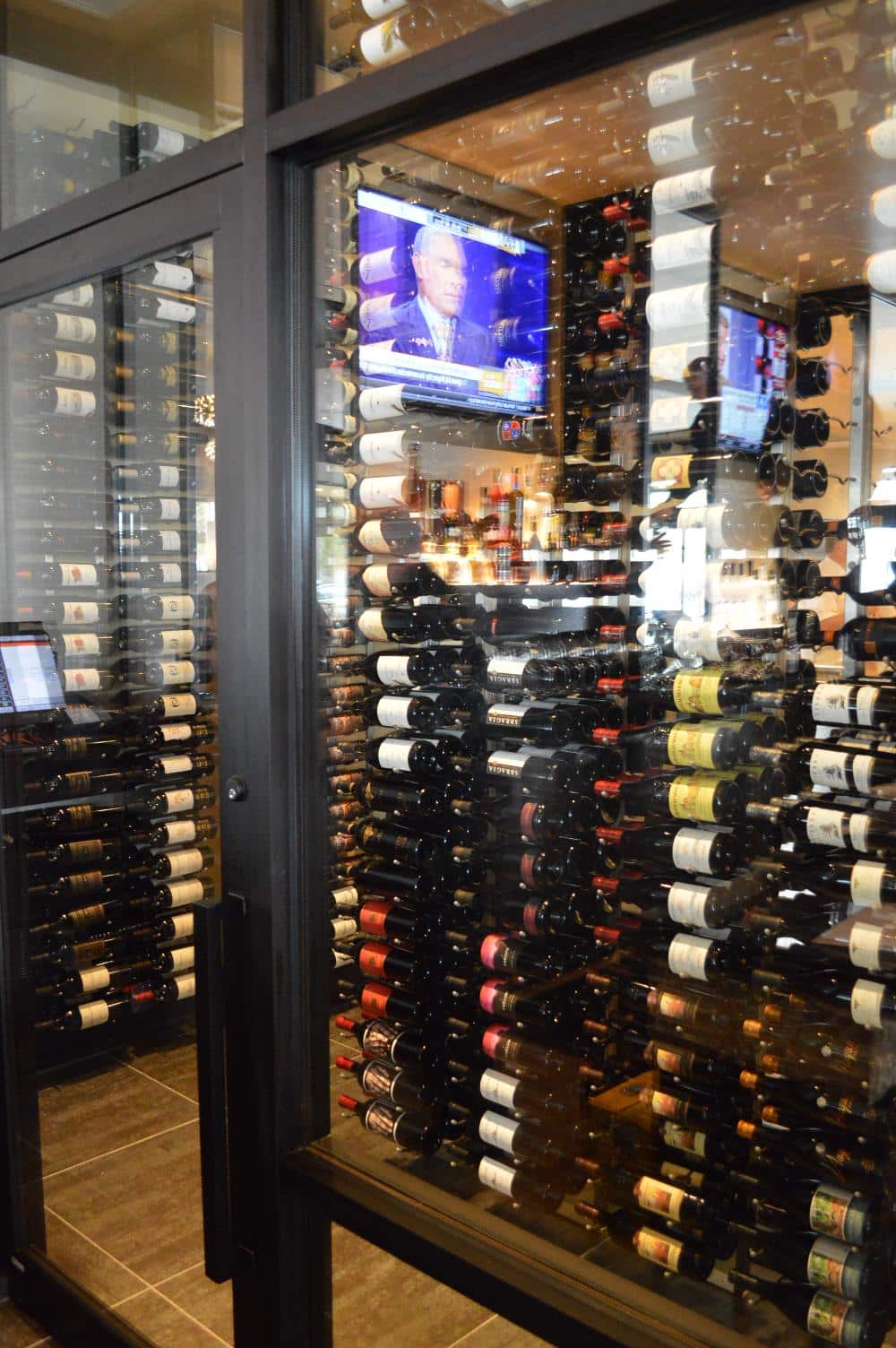
This Dallas project uses dual-pane glass. SEE ANOTHER dual pane glass door in a commercial wine cellar cooling project of ours.
When you enter the restaurant wine cellar, the front wall consists of a floor-to-ceiling wine rack with a brushed aluminum frame installed on both sides of a dual-pane glass.
The 3-deep metal wine racks were installed in the front section of the glass, while the rear portion was intended for single-deep wine storage.
Another triple-deep racking was placed on the left wall. It was mounted on the wall securely, which is a good option for tiny spaces.
When you enter a narrow space, going to the back of the cellar, you will find another wall-mounted single-deep wine rack on the left wall. The custom wine cellar was enclosed in glass to provide a clear view of the bottles on display.
Hire an Expert in Building a Safe Wine Cellar for Your Restaurant
Wine Cellar Specialists in Dallas will help boost your wine sales by building a safe and functional commercial wine cellar for your business. They use only high-performance cooling systems manufactured by cooling experts. Contact them today at +1 (866 ) 646-7089!









